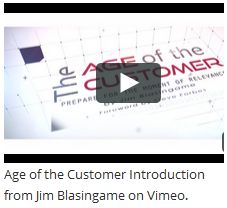 Incredibly, in 2017, here’s a question many small business owners ask: “We have a website, do we need a social media strategy, too?”
Incredibly, in 2017, here’s a question many small business owners ask: “We have a website, do we need a social media strategy, too?”
The answer is the same as for why you have an email address even though you have a phone. It’s not either/or, but rather both/and. Because as outstanding and handy as your website may be, there’s one increasingly important capability you need that most websites aren’t good at: community building.
Once customers find you, returning to that beautiful website of yours will be of decreasing interest to them. It’s not that your new stuff – products, how-to information, order status, special offerings, etc. – is no longer of interest to customers. It’s just that they don’t want to have to come back to your website to get it. More and more, customers are saying to businesses, “I like what you offer, but I won’t be returning to your website much, because I’m very busy. Why don’t you follow me home with the new stuff?”
This is what customers and prospects mean when they join your community by giving you permission to connect with them and send them offers and helpful information by email, text messaging, Twitter, Facebook, etc. They just want the new stuff, including updates to your website. Even when they return to buy something on your e-commerce platform, they expect to enter your website through the offer page you sent them, not from your homepage.
Building online customer communities – and getting permission to follow customers home – is how a small business transcends being competitive and achieves the pinnacle position: relevance. As you may know, I define a business social media strategy as building customer communities. But by my definition, social media is much older and more comprehensive than the online platforms, like Facebook, Twitter, etc. Your customer community strategy includes everything you do to build, connect with and serve those communities, including: email marketing, customer loyalty programs, the new social media activity, and, of course, the original social media: face-to-face.
In the old days – way back in 2003 – your customer list was just names on an accounts receivable report or sales forecast. Today, those customers are part of your business’s community, which also includes prospects who’re just becoming interested in you. But unlike the passive customer list of old – and visitors to your website – this community is functioning and dynamic, with fast-evolving expectations you have to meet or they’ll defect to another community.
Another important component of building customer communities is allowing prospects and customers to see your corporate values. Increasingly, prospects will turn into customers, and customers will become loyal, because they’re attracted to what your company stands for, which is evident in the values you demonstrate, including online. For example:
1. Are your brand elements – brand promise and image – all about you and your stuff, or do they sound like something that would benefit your customer community?
2. When delivering information, is it all about you, or does it contribute to the community?
3. What’s the tone of your marketing message? “Tone” is how brand messages are incorporated as you serve the community, from crassly commercial to almost subliminal. You should strike a tone balance between serving the community and making a sale.
Notice all of these demonstrate values that favor relationships more and transactions less.
In a world where everything you sell is a commodity, value – product, price, service – is the threshold of a customer community, but values are the foundation. Value is easy to find these days. But when community members are attracted to your values, they keep coming back and bring their friends.
Write this on a rock … Build and serve customer communities with a website and social media strategy that demonstrates your values.




